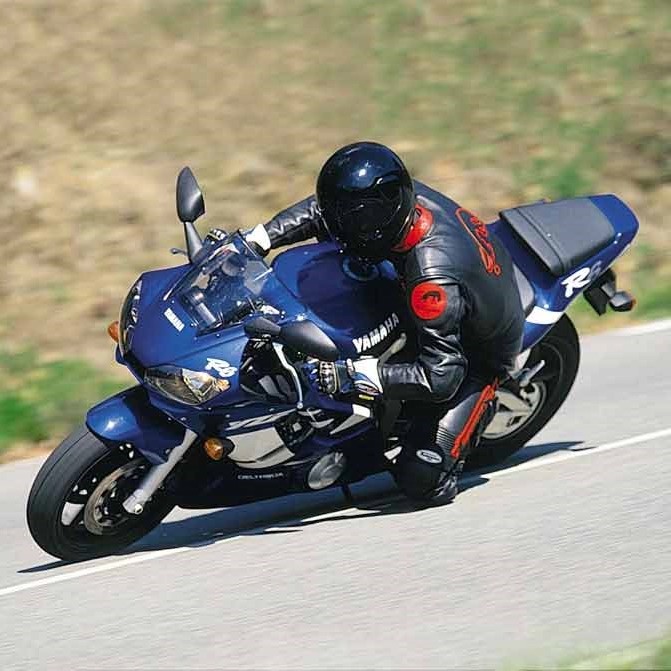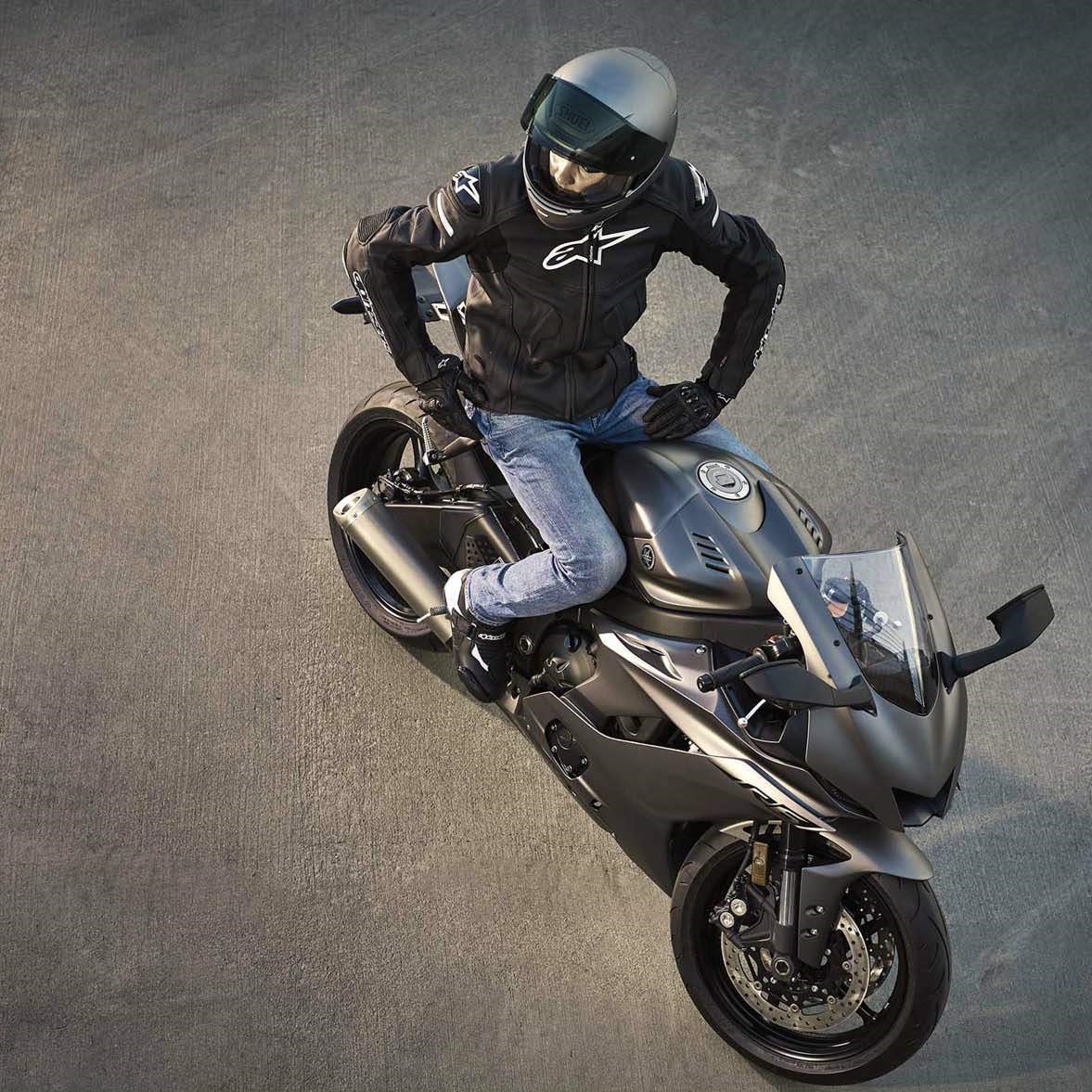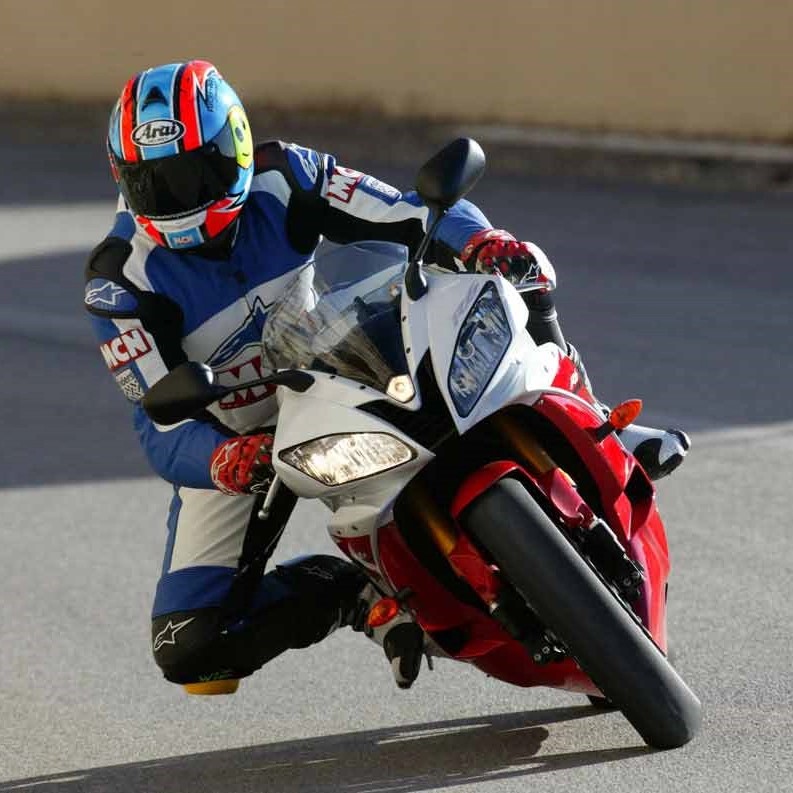Overview of the Yamaha R6’s Performance Capabilities
The Yamaha R6’s performance is a true testament to its engineering. Known for breathtaking agility and robust power, the R6 motorcycle commands respect on both tracks and streets. Its 599cc inline-four engine is the heart of its impressive top speed. With a design focused on high-revs, the R6 delivers a thrilling 116 horsepower at an exhilarating 14,500 rpm.

The lightweight design of the R6 enhances its nimble handling. It deftly carves through corners and accelerates with force. Riders can expect a top speed that, while not officially disclosed by Yamaha, is reported to hit roughly 162 mph. This speed positions the R6 amongst the fastest bikes in its class.
When compared with rivals such as the Kawasaki ZX-6R and the Honda CBR600RR, the R6 holds its own. Each of these competitors boasts similar top speeds around the 160 mph mark, emphasizing the R6’s competitive edge. It’s clear the R6 motorcycle top speed is a mix of impressive engineering and Yamaha’s dedication to high-performance bikes.
Beyond speed, the R6 shines in acceleration. The bike can jump from 0 to 60 mph in just 3.2 seconds. Quarter mile times are equally impressive, further showcasing the R6’s aptitude for quick sprints. These figures make the Yamaha R6 a popular choice for thrill-seekers and performance enthusiasts alike.
In summary, the Yamaha R6 stands out for its speed, acceleration, and agile handling. It’s a motorcycle that beckons riders to push their limits while offering a performance profile that competes strongly in the 600cc class.
Dissecting the R6’s Engine: Power and Torque Analysis
Yamaha’s R6 motorcycle draws its fierce acceleration and r6 motorcycle top speed from its potent engine. The heart of the R6 is a 599cc inline-four powerhouse. It delivers a solid 116 horsepower at a screaming 14,500 rpm. This high-rev nature plays a key role in the bike’s remarkable performance.
The engine’s torque output further refines its spirited ride. It peaks at 43 ft/lb of torque at 11,000 rpm. This positions the R6 as a leader in the middleweight sports bike segment. Most of the R6’s torque comes on at higher rpms. Riders must rev the engine high to tap into the bike’s full potential.
In contrast, at lower revs, the power takes a dip. The bike feels less punchy below 9,000 rpm. This characteristic demands skilled riding for optimal performance. Keeping the engine spinning in the power band ensures rapid acceleration and power delivery.
The R6’s engine is also known for its smooth power curve beyond 9,000 rpm. It climbs steadily to its peak, delivering uninterrupted acceleration. Tuning and modifications can further sharpen this trait. Adding a full exhaust system and an ECU flash can unlock more power at lower rpms.
A remarkable feat for the R6’s engine is the power-to-displacement ratio. The bike claims a milestone of 200 horsepower per liter. This is an incredible showcase of Yamaha’s ability to craft high-performing engines.
In summary, the Yamaha R6’s engine excels with high-rpm horsepower and peaky torque. It’s engineered for those who love to chase the redline and compete at top speeds. The R6 continues to be a defining example of Yamaha’s prowess in performance motorcycle design.
Real-World Top Speed of the Yamaha R6
The Yamaha r6 motorcycle top speed intrigues riders and enthusiasts alike. Officially, Yamaha does not state its top machines’ top speeds. But tests and owner reports suggest a top speed of about 162 mph. Riders often look to third-party validations for these figures. Note, individual R6 bikes may vary slightly in top speed due to factors like care and condition. Track conditions play a role too, affecting the bike’s performance capabilities on a given day.
Real-world tests put the Yamaha R6 near the top of its class. It rivals the Kawasaki ZX-6R and the Honda CBR600RR, both reaching similar speeds. While top speeds create buzz, they don’t define overall performance. The R6’s design is for more than just speed. It balances high-rev thrills with agile handling and responsive control. Thus, it’s a beloved choice among riders seeking a comprehensive performance package.
Overall, the real-world r6 motorcycle top speed confirms its place as a standout in 600cc sports motorcycles. When pushed to its limits, it competes fiercely with its class counterparts. Yet, it’s not just about how fast it can go. It’s about the total experience the R6 delivers on the road and track.
Acceleration Breakdown: 60 mph and Quarter Mile Times
The Yamaha R6 impresses with its explosive acceleration. From a standstill to 60 mph, the R6 only needs 3.2 seconds. This demonstrates the bike’s potential for powerful launches. In the motorcycle world, these figures are a clear indicator of superior performance capabilities. The R6’s acceleration rates at the same level as some of the best in its class.
When it comes to the quarter mile, a standard benchmark for motorcycles, the R6 completes this distance in just 10.75 seconds. Such speed underscores its strength in short-distance sprints. This performance compares favorably to its main competitors. This places the R6 as a top choice for enthusiasts who enjoy both the rush of a quick takeoff and the thrill of high speed.
These acceleration figures showcase the R6’s capabilities in real-world riding situations. Whether it’s a spur-of-the-moment street race or a timed track run, the R6 proves its prowess. Overall, the Yamaha R6 not only boasts a fast top speed but also promises riders heart-pumping acceleration.
R6 vs Rivals: Top Speed and Acceleration Comparison
When analyzing r6 motorcycle top speed, the Yamaha R6 often stands toe-to-toe with its closest rivals. With a claimed top speed of 162 mph, it’s in a tight race against Kawasaki’s ZX-6R and Honda’s CBR600RR. Both competitors hit similar maximum speeds. However, r6 motorcycle top speed is just one aspect of performance.
Acceleration is where the R6 shines. It leaps to 60 mph in only 3.2 seconds, a number mirroring the Kawasaki. In quarter mile runs, it clocks a swift 10.75 seconds, on par with its class peers. This shows the R6’s strong standing in rapid acceleration contests.
Rider skill and bike tuning impact these numbers. The right adjustments can squeeze out extra speed and quicker times. But out of the box, the R6 competes fiercely in its segment.
Overall, the R6’s top speed and acceleration are competitive. It matches well against industry rivals. This makes it a preferred bike for speed lovers and track enthusiasts. Yamaha’s R6 represents a balance of raw speed and agility, rivaling some of the best in the 600cc class.
 Impact of Aerodynamics and Riding Style on Top Speed
Impact of Aerodynamics and Riding Style on Top Speed
Aerodynamics and Performance
The R6 motorcycle’s top speed is partly tied to its aerodynamic design. Sleek bodywork cuts through air resistance. This reduces drag and allows for higher speeds. Wind tunnel tests have shaped the R6’s exterior. It’s optimized for minimal wind resistance at high speeds. Riders tucked in, with their body close to the bike, also help. This posture minimizes air resistance and enhances speed. Aerodynamics play a crucial role in achieving and maintaining top speeds.
The Role of Rider Skill and Style
Rider skill greatly influences top speeds. Experienced riders know how to find the sweet spot between control and speed. They use precise throttle and braking techniques. These methods improve acceleration and maintain momentum. Skillful gear shifting is also crucial. It helps riders stay in the power band of the engine. Riders direct the bike’s trajectory and lean angles. They make use of the R6’s agility. Harnessing the bike’s potential requires understanding its handling dynamics. Both skill and riding style are key factors in reaching top speeds.
Modifications and Tuning: Enhancing the R6’s Performance
Tuning and modifications can increase the R6’s already formidable speed and power. Riders have a variety of options to unlock the bike’s full potential. Performance enhancements typically focus on the engine, exhaust, and electronic control systems.
Engine Modifications
Engine mods can significantly boost horsepower and torque. Replacing standard parts with high-performance alternatives is common. For instance, installing camshafts with a higher lift and longer duration can lead to noticeable improvements in power delivery. Moreover, upgrading to a high-flow air filter and intake system can optimize air flow and engine breathing.
Exhaust Upgrades
Exhaust system upgrades can also elevate the R6’s performance. A full exhaust system, replacing the stock setup, reduces weight and backpressure. This allows the engine to expel exhaust gases more freely, enhancing throttle response and power outputs.
ECU Flashing and Fuel Mapping
Refining the electronic control unit (ECU) settings through flashing helps calibrate fuel and ignition for peak performance. Adjusting the fuel mapping to match engine mods ensures the R6 runs efficiently at all RPMs. This tuning can maximize the benefits of both engine and exhaust enhancements.
Suspension and Brake Upgrades
Improving the suspension with adjustable components helps manage increased power. Better brakes are also vital for handling the extra speed safely. High-performance brake pads and rotors can improve stopping power and thermal stability during hard riding.
Aerodynamic Improvements
Streamlining the R6’s body can further reduce drag. Aftermarket fairings and windshields designed for aerodynamics contribute to higher top speeds. These changes can also improve the R6’s stability when reaching those top speeds.
Overall, the right combination of mods and tunings can transform the Yamaha R6 into an even greater high-speed beast. It’s important for riders to consider the legal and safety implications of any modifications they undertake. Skilled installation and careful balancing of modifications are crucial for maintaining the R6’s legendary performance.
 The R6 in Context: Its Legacy and Yamaha’s Future Models
The R6 in Context: Its Legacy and Yamaha’s Future Models
The Yamaha R6 has a rich heritage. It has shaped the sports bike landscape for two decades. Loved by racers and enthusiasts, the R6 is a symbol of speed and precision. Its legacy includes numerous race victories and a cult following. It’s not just a bike; it’s part of Yamaha’s soul.
Yamaha’s R6 set benchmarks in the 600cc category. It pushed boundaries with its top speeds and handling. While many adore the R6, Yamaha must look forward. Emissions laws and market shifts bring change. Yamaha evolves, blending R6’s DNA into new models. The future is bright with innovation.
The R6’s influence extends to Yamaha’s upcoming bikes. Look at the YZF-R7 and an expected YZF-R9. These bikes carry the R6’s spirit into a new era. They promise advanced technology and thrilling performance. As the R6 makes way, its spirit lives on. Yamaha’s legacy continues with fresh designs and groundbreaking bikes.
In summary, the Yamaha R6’s legacy is undeniable. It remains an icon of performance motorcycling. As Yamaha crafts future models, they build on the R6’s foundations. Riders can expect new levels of excellence. Yamaha’s passion for high-speed thrills endures, marking time with innovation and speed.
